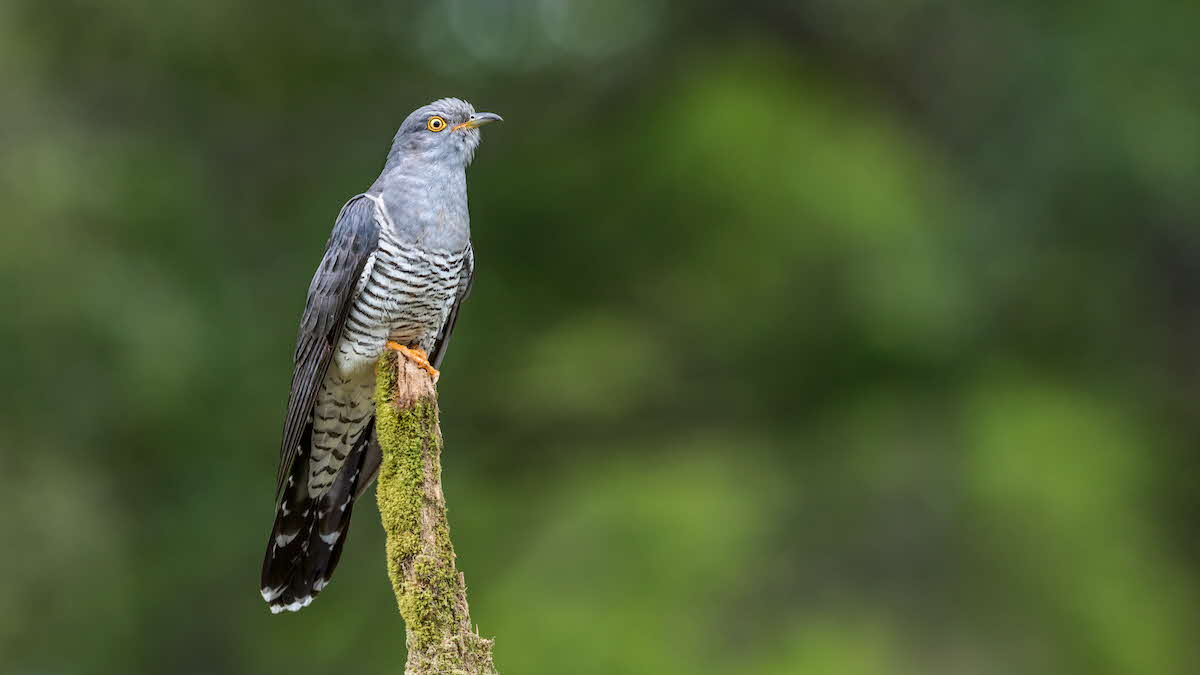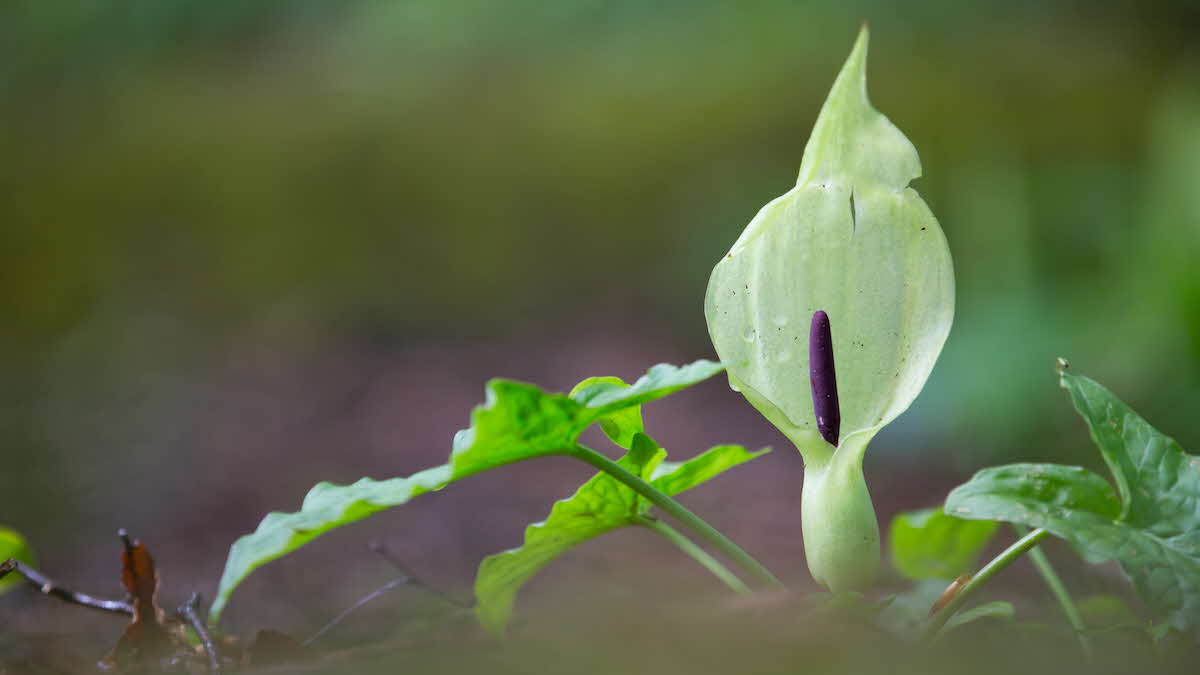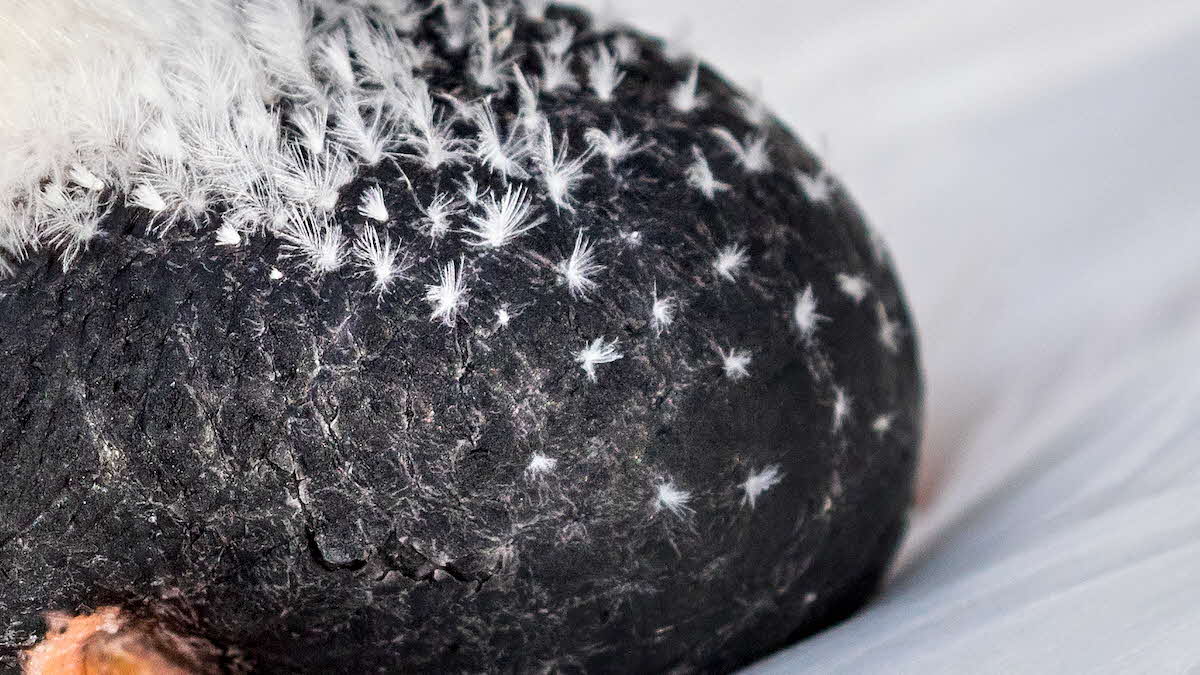Top nature campsites
You’ll be amazed at the variety of animals to spot on some of our Club campsites
View our top nature campsitesDavid Chapman listens out for the first cuckoo of the year and looks at how it has entered British folklore
 A male cuckoo
A male cuckooOf all the sights and sounds of nature that we associate with the changing of the seasons, the call of the cuckoo stands out from the crowd.
Cuckoos can be found throughout Britain from the second half of April onwards as they return from their wintering grounds in Africa. They are most numerous around reedbeds (particularly near woodland), and on moorland and heath. The familiar ‘cuck-ooo’ or ‘cuck-cuck-ooo’ sound is made only by the male bird – the female replies with a delightful bubbling sound.
Despite their very different calls, the male and female cuckoo look similar (the female is browner). When in flight the cuckoo can resemble a hawk, its long, pointed tail and swept back wings giving it a remarkably streamlined shape. On closer inspection the cuckoo’s barred breast is similar to that of the sparrowhawk, and even its yellow eye and grey-brown back can mislead. In common with a bird of prey, the cuckoo is often mobbed by small birds when it flies – whether they think they are surrounding a predator or whether they are aware of the indirect threat posed is unclear.
Aside from its song, the cuckoo is renowned for its habit of laying eggs in the nests of other birds – indeed, a female cuckoo can lay one egg per day for 25 consecutive days in the nests of host species which, in Britain, include the reed warbler, sedge warbler, dunnock, robin, meadow pipit and pied wagtail. Individual cuckoos tend to choose nests of just one species and their eggs evolve to resemble those of their hosts.
It is this behaviour in the main that has seen the word ‘cuckoo’ being adopted into the English language. Indeed, the term ‘cuckold’ was historically used as a term of derision to describe a man whose wife was having an affair with another man. Even as far back as 50AD the cuckoo’s scientific name, cuculus, was used as a term of reproach, particularly aimed at men. Its full scientific name, cuculus canorus, literally means ‘a living thing producing sound’.
 Cuckoo pint, also known as lords and ladies, grows in woodland and hedgerows
Cuckoo pint, also known as lords and ladies, grows in woodland and hedgerowsAccording to tradition the luckiest date on which you can hear your first cuckoo of the year is 28 April. There is a variety of superstitions about what you should do when you hear it.
It was once thought to be unlucky to see the first cuckoo before the first swallow, while ill fortune was said to befall the person who heard a cuckoo calling from their left (whereas a year of good luck could be expected if the call was from your right!) Some people even thought that turning over the coins in your pocket while listening to the cuckoo’s call would bring prosperity, while others believed that the calling of a cuckoo was a warning of worsening weather.
With the first sight and sound of the cuckoo announcing the beginning of spring, it is little surprise that the bird lends its name to other natural subjects – for example, the ‘lords-and-ladies’ plant is known as ‘cuckoo pint’, ‘lady’s smock’ is referred to as the ‘cuckoo flower’ and froghopper larvae produce ‘cuckoo spit’.
 Cuckoo spit is formed by the nymph of the froghopper as a defence against predators; look out for it on vegetation during the spring
Cuckoo spit is formed by the nymph of the froghopper as a defence against predators; look out for it on vegetation during the springThe froghopper is a tiny insect that resembles a miniature grasshopper – as well as jumping like a frog, it has large bulging eyes.
The young froghopper has developed an unusual form of defence to repel a variety of predators. It drinks sap, or honey dew, from a plant by inserting its syringe-shaped mouthparts into its stem. Then, through its breathing tubes, it sucks in air, which it mixes with the excess sap to create a kind of froth, which envelopes the bug and creates a protective shield. As well as preventing attack from predators, this froth, or ‘cuckoo spit’, prevents the young nymph from drying out.
Despite the fact their calls are loud, repetitive and so recognisable, cuckoos are surprisingly elusive – they don’t stay in Britain for long. Once they have mated and laid their eggs, they head off in July, leaving their offspring to be raised by their foster parents.
Every issue I will show you a photo of something from the natural world. All you have to do is figure out what it is! No clues, no prizes – it’s just for fun. (I will give you the answer next month, but if you want to know sooner download the Digital Magazine app)

March’s mystery photo answer: the water vole